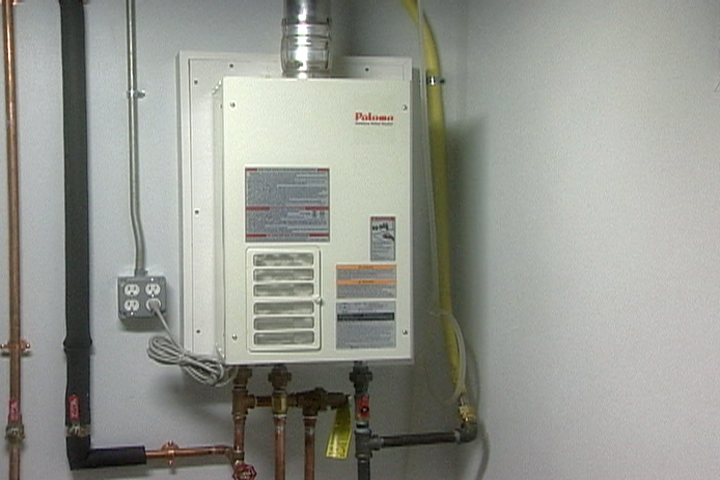Steps to Successfully Care for Your Home's Hot Water System
Steps to Successfully Care for Your Home's Hot Water System
Blog Article
What're your beliefs about What Kind of Maintenance Do Water Heaters Need??

Warm water is necessary for everyday convenience, whether it's for a rejuvenating shower or cleaning meals. To ensure your warm water system runs effectively and lasts much longer, regular upkeep is essential. This short article supplies sensible tips and understandings on exactly how to maintain your home's warm water system to prevent disruptions and pricey repair services.
Intro
Preserving your home's warm water system may appear overwhelming, however with a couple of easy steps, you can guarantee it operates efficiently for years ahead. This guide covers whatever from understanding your hot water system to do it yourself upkeep ideas and recognizing when to contact professional assistance.
Value of Maintaining Your Warm Water System
Regular maintenance not just extends the life expectancy of your warm water system but likewise guarantees it operates effectively. Disregarding maintenance can cause lowered efficiency, higher power costs, and even premature failing of the system.
Indicators Your Warm Water System Needs Maintenance
Recognizing when your warm water system needs interest can stop significant problems. Look out for indications such as irregular water temperature level, strange sounds from the heating unit, or rusty water.
Comprehending Your Warm Water System
Prior to diving into maintenance jobs, it's valuable to recognize the standard parts of your hot water system. Generally, this includes the hot water heater itself, pipelines, anode rods, and temperature level controls.
Regular Monthly Upkeep Tasks
Normal month-to-month checks can aid catch minor concerns prior to they rise.
Purging the Hot Water Heater
Purging your hot water heater removes sediment build-up, boosting performance and lengthening its life.
Monitoring and Changing Anode Rods
Anode poles protect against rust inside the container. Inspecting and replacing them when worn is important.
Checking and Changing Temperature Level Settings
Changing the temperature settings guarantees ideal performance and safety.
Do It Yourself Tips for Upkeep
You can do a number of maintenance tasks yourself to keep your hot water system in top condition.
Looking for Leakages
Consistently evaluate pipes and links for leakages, as these can bring about water damage and greater costs.
Testing Stress Relief Valves
Checking the stress safety valve guarantees it operates correctly and stops extreme pressure buildup.
Insulating Pipelines
Shielding hot water pipes reduces heat loss and can conserve power.
When to Call an Expert
While DIY upkeep is helpful, some problems require expert competence.
Complex Concerns Calling For Expert Help
Instances include major leakages, electric problems, or if your hot water heater is constantly underperforming.
Routine Specialist Maintenance Advantages
Professional upkeep can include thorough assessments, tune-ups, and guaranteeing conformity with safety and security requirements.
Conclusion
Routine maintenance of your home's warm water system is important for performance, durability, and cost financial savings. By following these ideas and knowing when to look for professional assistance, you can make certain a dependable supply of warm water without unexpected interruptions.
How to Maintain an Instant Hot Water Heater
Before tinkering with your hot water heater, make sure that it’s not powered on. You also have to turn off the main circuit breaker and shut off the main gas line to prevent accidents. Also turn off the water valves connected to your unit to prevent water from flowing into and out of the appliance. 2. When you’re done, you have to detach the purge valves’ caps. These look like the letter “T†and are situated on either side of the water valves. Doing so will release any pressure that has accumulated inside the valves while at the same time avoid hot water from shooting out and burning your skin. 3. When the purge valves’ caps are removed, you have to connect your hosing lines to the valves. Your unit should have come with three hoses but if it didn’t, you can purchase these things from any hardware or home repair shops. You can also get them from retail stores that sell water heating systems. Read the user’s manual and follow it to complete this task properly. When the hosing lines are connected, open the purge port’s valves. 4. You should never use harsh chemical cleaners or solutions when cleaning your unit. Make use of white vinegar instead. It should be undiluted and you’ll probably use about 2 gallons. 5. Now flush your water heater. This task should probably take about 40 minutes. We can’t give you specific directions for this because the procedure is carried out depending on the type, model and brand of your heater. With that being said, refer to the user’s manual. 6. When you’re done draining the unit, you have to turn off the purge port valves again. Remove the hosing lines that you earlier installed on each of the water valves. Put the valve caps (purge port) back in their respective places and be very careful so as not to damage the rubber discs that are found inside these caps. 7. Now that everything’s back in place, check your user’s manual again to find out how to reactivate your water heating system. 8. Once it is working, turn one of your hot water faucets on just to let air pass through the heater’s water supply pipes. Leave the tap on until water flows smoothly out of it. https://www.orrplumbing.com/blog/2014/september/how-to-maintain-an-instant-hot-water-heater/

I am just very interested by What Kind of Maintenance Do Water Heaters Need? and I really hope you liked our post. Are you aware of somebody who is excited about the subject? Feel free to promote it. Bless you for your time. Please visit our site back soon.
Go Company Report this page